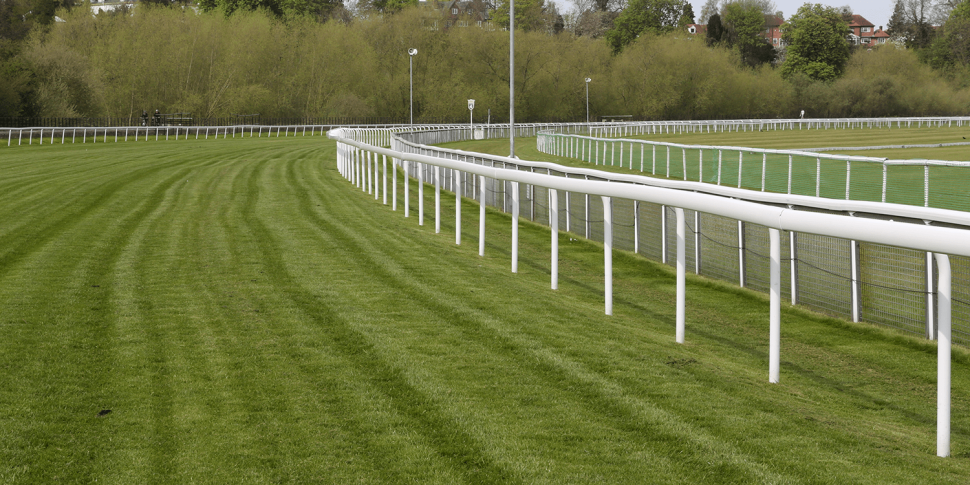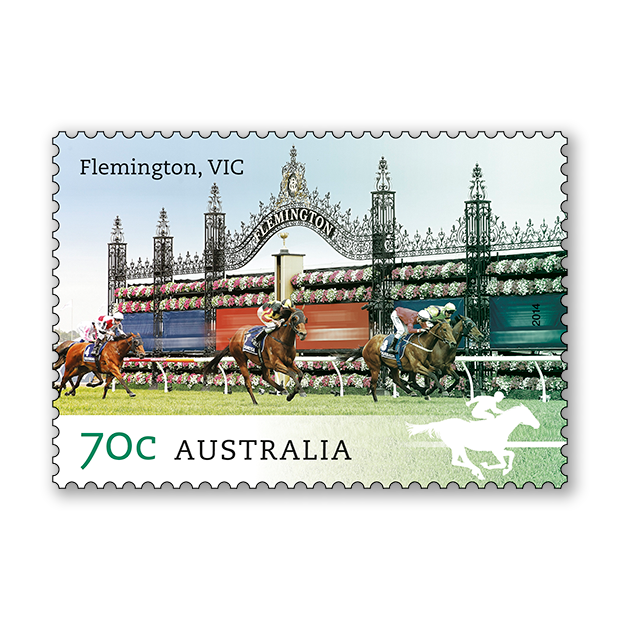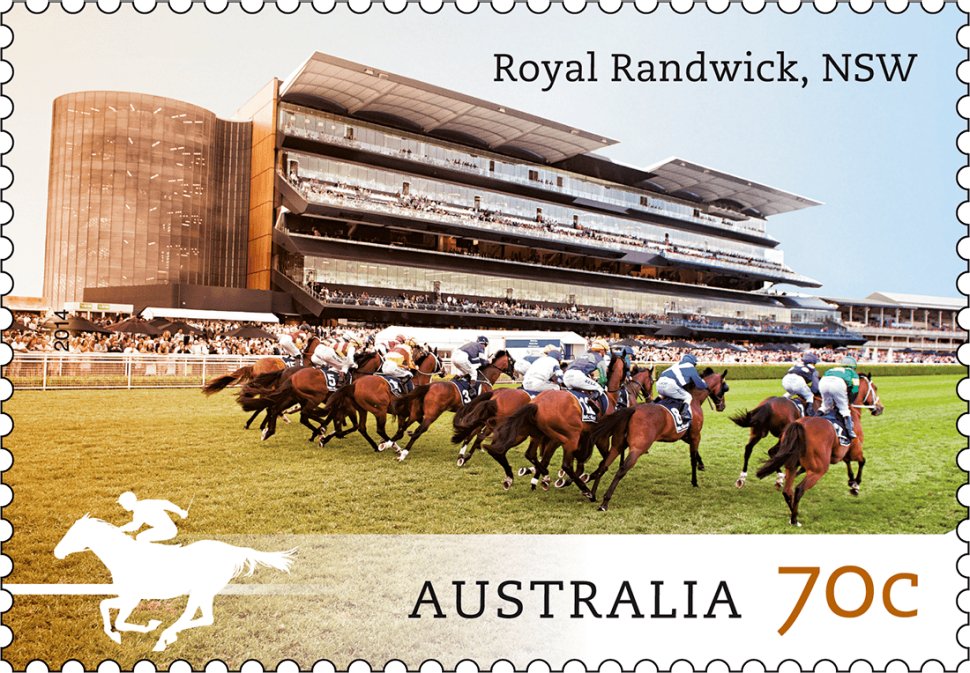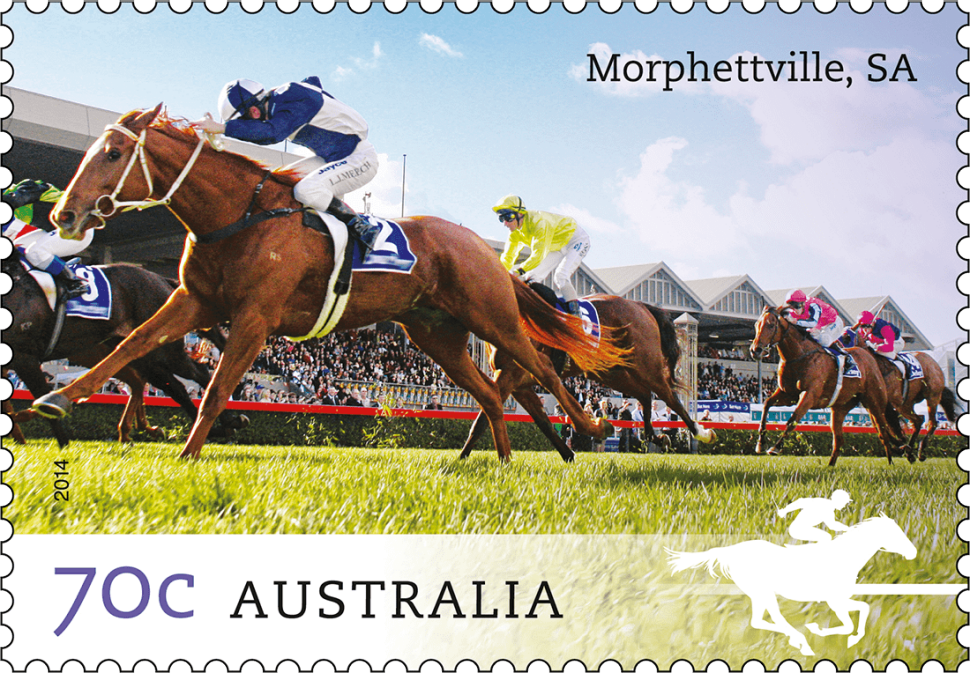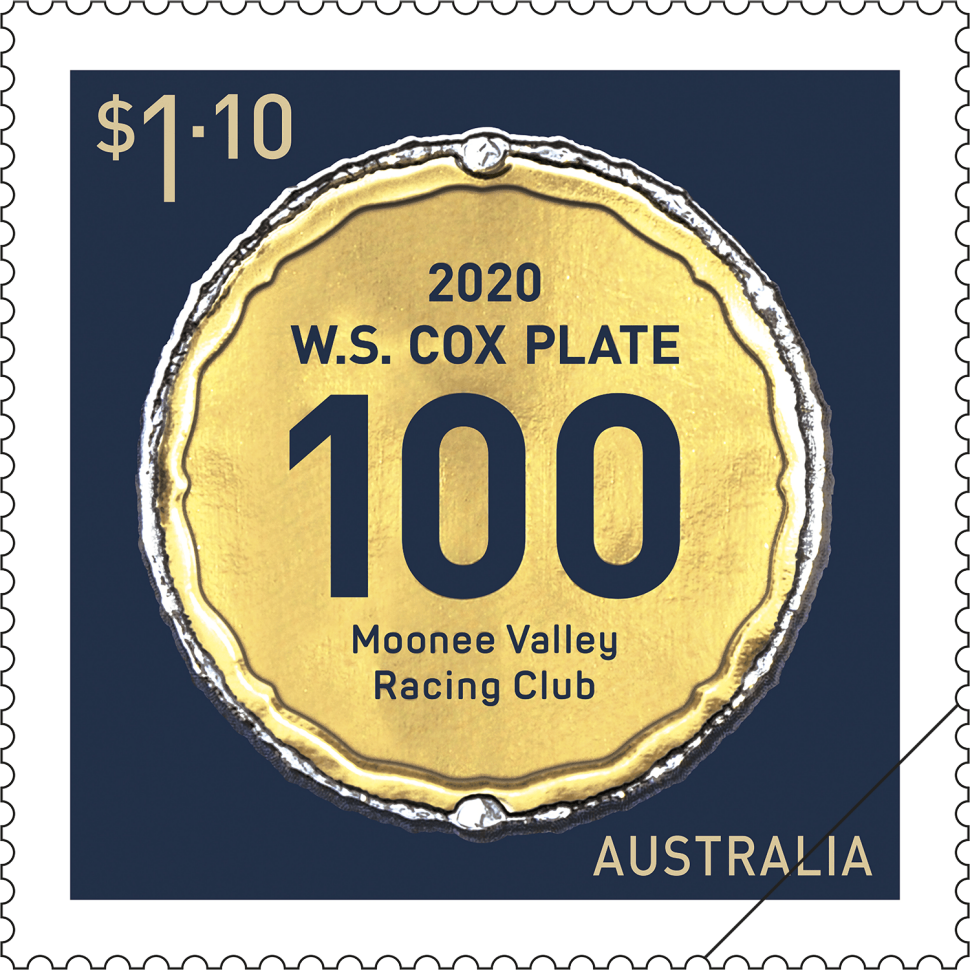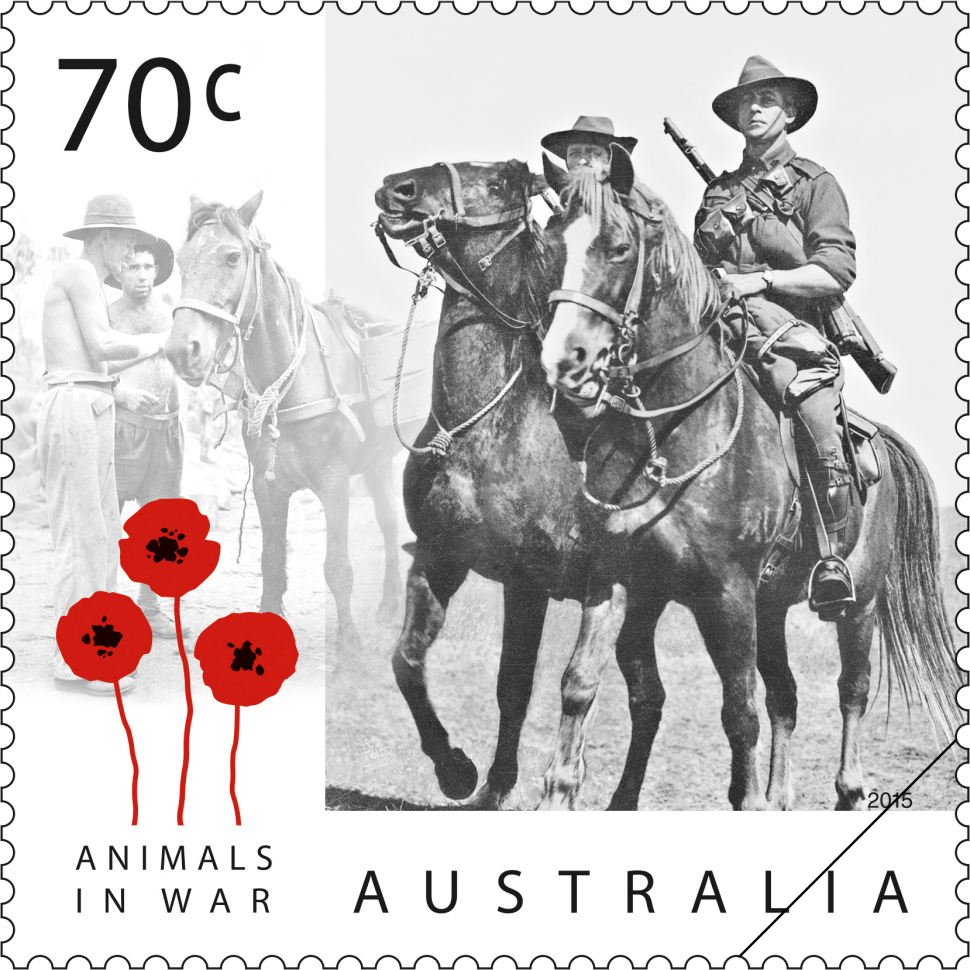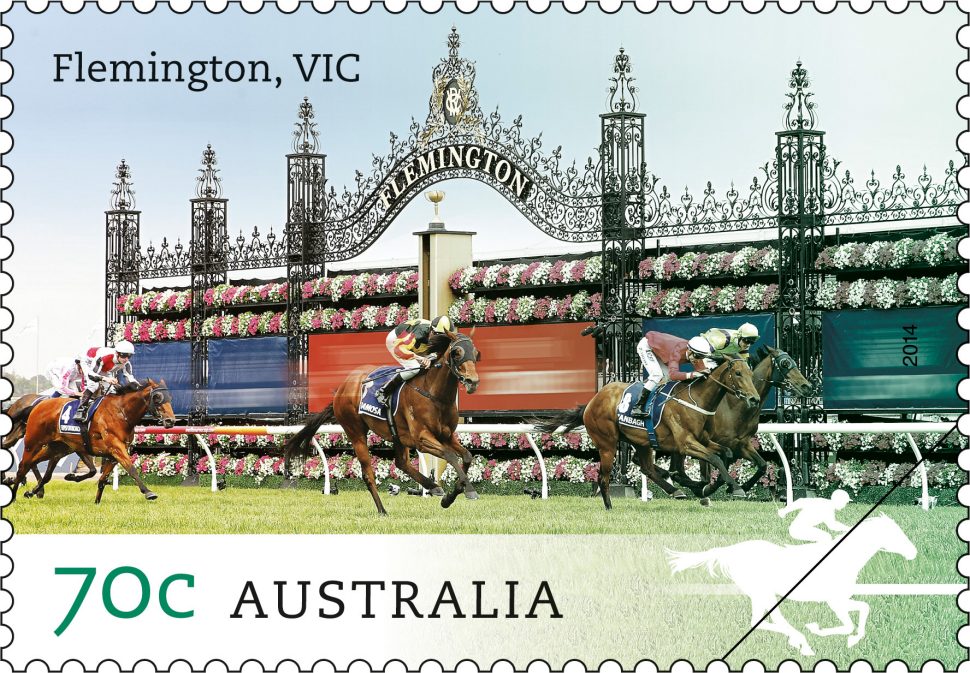Horseracing in Australia stretches back to the early decades of European settlement in New South Wales, with the first official race taking place in Sydney’s Hyde Park in 1810. While the sport was imported from Britain, in the Australian context this “sport of kings” was wrested from its upper-class connections to become a more egalitarian spectator sport.
Today, horseracing is counted as one of the country’s most popular spectator sports, topped only by AFL and rugby league. There are some 367 racecourses around the country, attracting the spectators to both major urban and smaller country race meets. Between these courses, some 19,626 races were run during the 2012–13 financial year.
This stamp issue focuses on racecourses, rather than racehorses, incorporating architectural features to help convey a sense of place. The horse-and-rail graphic has been introduced to indicate the direction in which races are run in each state.
Designer
Sonia Young, Australia Post Design Studio.
Products released in this issue
- Stamps 4 x 70c
- Covers (blank pictorial, gummed and self-adhesive)
- Stamp pack
- Maxicards
- Booklet of 10
- Chequebook 20 x 10
- Roll of 200
- Gutter strip with design
Technical specifications
- Issue date
- 7 October 2014
- Issue withdrawal date
- 30 April 2015
- Denominations
- 4 x 70c (se-tenant)
- Stamp design
- Sonia Young, Australia Post Design Studio
- Product design
- Sonia Young, Australia Post Design Studio
- Illustrator/Photographer
- Ross Stevenson, Steve White, Bruno Cannatelli, Quinn Rooney/Getty Images
- Paper - gummed
- Tullis Russell
- Printer - gummed
- McKellar Renown
- Paper self-adhesive
- C100
- Printer self-adhesive
- McKellar Renown
- Paper - rolls
- Raf.SC85
- Printer - rolls
- Pemara
- Printing process
- Lithography
- Stamp size
- 37.5mm x 26mm
- Perforations
- 13.86 x 14.60
- Sheet layout
- Module of 50
- FDI postmark
- Flemington, VIC 3031
- FDI withdrawal date
- 5 November 2014
The historic Eagle Farm is Queensland’s premier racing track and home to the Brisbane Racing Club, the 2009 merger of the Brisbane and Queensland Turf Clubs. It was established in the Brisbane suburb of Ascot in 1863, and its historic grandstands, known as the Paddock Stands, were jointly designed by Hunter & Corrie and John H. Buckeridge in 1889¬–90 and are listed on the state heritage list. While it has primarily been used for horseracing throughout its history, Eagle Farm was also used to house American troops fighting in the Pacific in 1941.
Races are run clockwise on this 2,027-metre racetrack, which is oval in shape and has sweeping bends and a 434-metre straight. Eagle Farm’s major racing event is the Brisbane Racing Carnival, held annually each May–June, with the Stradbroke Handicap being the key event.
Photograph: Ross Stevenson
Located in Sydney’s eastern suburbs, Royal Randwick is Australia’s oldest key racing venue, established in 1833, when it was known as Sandy Course. Unlike Flemington, which has had a continuous racing history, Randwick course moved to Homebush in 1838 before returning to Randwick in 1860. The Queen endorsed the track in 1992, making it Royal Randwick. Through the decades, the course has hosted not only countless race days but papal masses and concerts, and it was used as a military recruitment site during both world wars.
Randwick ranges over a 200-acre site and is home to the Australian Turf Club, which resulted from the 2011 merger of the Australian Jockey Club and Sydney Turf Club. It has recently undergone redevelopment and its facilities now include the new six-level grandstand and the “Theatre of the Horse”, an outdoor amphitheatre with a 4,000-person capacity.
Photograph: Steve White
Morphettville hosted its first race meeting in 1875 and is home of the South Australian Jockey Club (SAJC). Located in Adelaide, Morphettville is the state’s largest and premier racecourse, hosting around 60 racing days annually, including its feature event, Adelaide Cup Day. With the closure of Adelaide’s two other metropolitan tracks – Victoria Park in 2007 and Cheltenham Park in 2009 – and the consequent increase of races at Morphettville, an additional first-class surface was established there in 2009. The Parks track runs on the inside of the main track and features a world-first, hydraulically operated retractable winning post. This flexibility allows races to be alternated between tracks, which helps minimise wear and tear to both tracks.
Photograph: Bruno Cannatelli
Flemington is the oldest continuing metropolitan racecourse in the country, with races run every year since 1840. That first race meeting was held on the river flats beside the Maribyrnong River, and the course was originally known as Melbourne Racecourse. The Melbourne Cup, the richest and most famous Australian horse race, was first run on the course in 1861.
Flemington is home to the Victoria Racing Club (VRC), the origins of which lie in a merger of the Victorian Turf Club and the Victoria Jockey Club in 1864. In 2014, it will be the club’s 150th anniversary.
The course, on which races are run in an anti-clockwise direction, has a circumference of 2,312 metres. The essentially pear-shaped course includes a six-furlong straight (1,200 metres) and is overlooked by three grandstands that allow for an astounding 120,000 spectators. Flemington is listed on both the Australian National Heritage List and the Victorian Heritage Register.
Photograph: Quinn Rooney/Getty Images
This content was produced at the time of the stamp issue release date and will not be updated.
